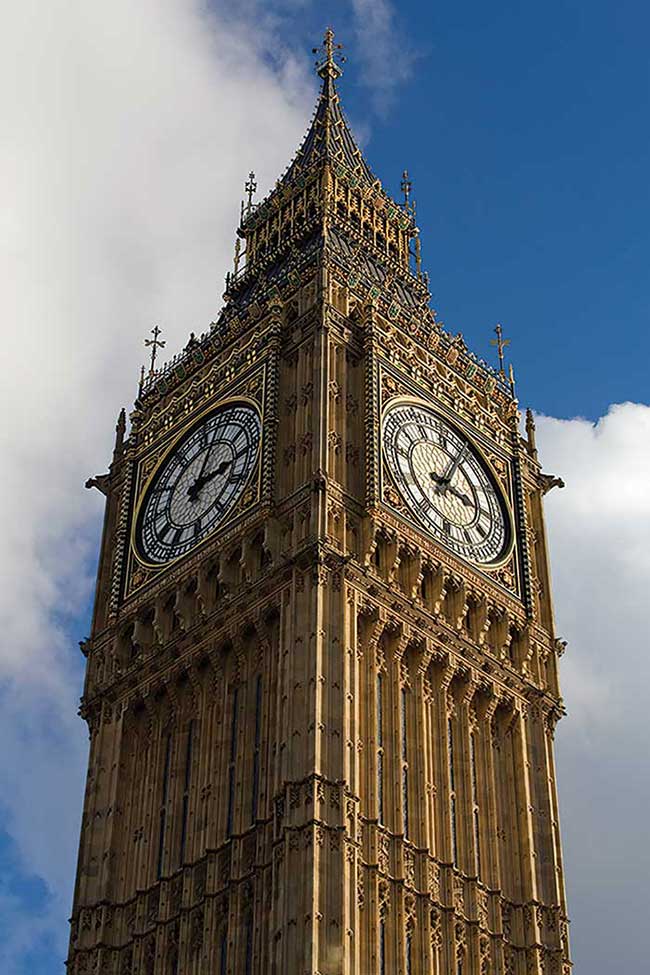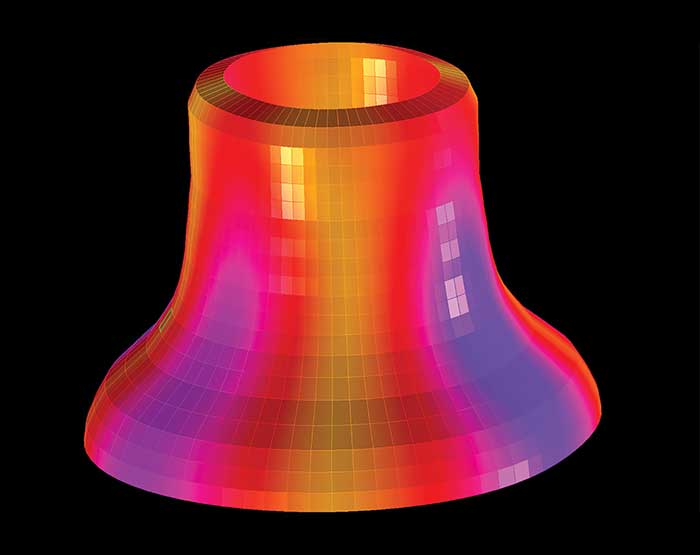"For whom the bell tolls” took on a new meaning for a group of U.K. researchers as they “vibration mapped” the famous London clock bell, the Great Bell — more commonly known as Big Ben — that resides inside the Elizabeth Tower at the north end of the Palace of Westminster.
Using two Polytec PSV-500 3D scanning laser Doppler vibrometers, the team from the Advanced Structural Dynamics Evaluation Centre (ASDEC) in the University of Leicester’s department of engineering measured Big Ben’s chimes at 9 a.m., 10 a.m., 11 a.m. and noon, with hopes of finding out how it produces its distinct tone.

Elizabeth Tower is home to five bells, including Big Ben. Courtesy of the University of Leicester.
The ASDEC team first created a 3D computer model of Big Ben and then made its way up the 334 steps of spiral staircase to the belfry with equipment in tow. Overlooking London, they used lasers to map the vibrations in the metal of the bell as it rang at the top of each hour.
Martin Cockrill, technical specialist from ASDEC, told Photonics Media it was a race against the clock, literally, to get the job done.
“We could only use the laser Doppler vibrometers in 1D mode, as there just wasn’t the logistics to get the full 3D system to the top of the tower,” he said. “Time constraints meant we needed to use two systems to measure enough of the bell within the time allowed.”
The technique mapped vibrations in the metal of Big Ben that are too minute to be seen by the naked eye. Cockrill and his team were able to get over 500 measurements across the surface of Big Ben, which wouldn’t have been possible with previous technologies.
“We were concerned we would have a problem getting enough laser scatter off the surface of Big Ben, particularly with all the contamination that is on the surface for the centuries of London’s air that it’s been exposed to,” said Cockrill. “But to our delight, the measurement went perfectly, and we didn’t have any problems. It probably helps that the excitation of the bell is so huge when it is struck.”

This 3D animation shows one of the vibration patterns of Big Ben. Courtesy of the University of Leicester.
Big Ben is thicker than other bells of similar size, weighing more, and as a result it has a higher pitch than expected for its diameter. When the bell is struck, the impact causes a number of different vibrations or modes. The frequency and intensity of these modes are predominantly caused by the profile of the bell.
ASDEC team leader Cockrill says laser-scanning vibrometry, used in this project, is constantly improving.
“You used to be happy that it measured something at all on a seemingly impossible task,” he said. “These days ‘impossible’ is standard and we are aiming to make it the efficient, cost-effective choice.”
For Cockrill and his team, this once-in-a-lifetime opportunity was a chance to hone their skills in a very unique and iconic location.